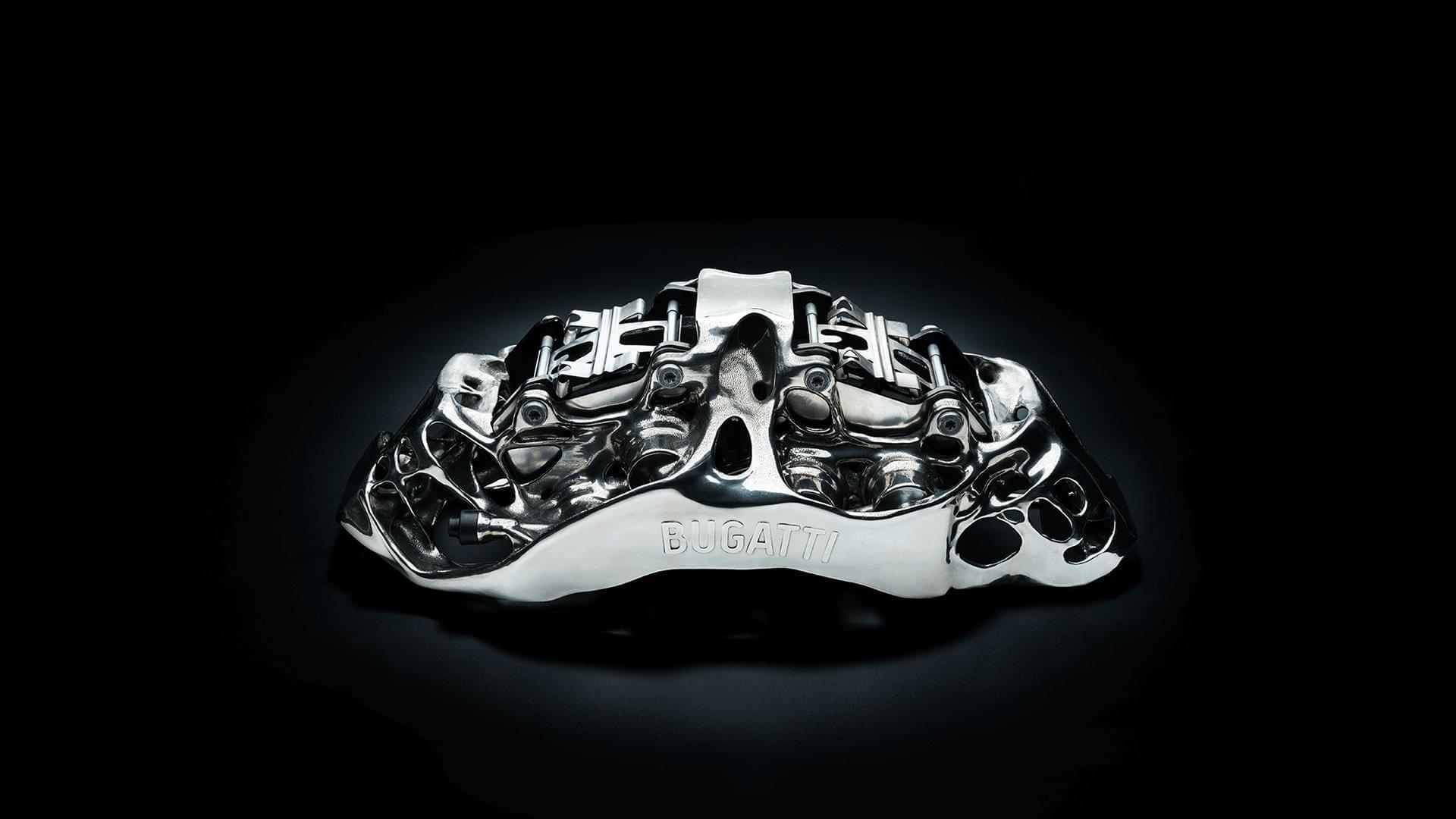Sparks flew as Bugatti tested its generatively designed 3D printed brake caliper, additively manufactured with SLM Solutions technology. Volumetrically this part is the largest functional titanium component built with SLM technology.
The 3D printed metal part can cope with extreme strength, stiffness and temperature requirements at customers’ required high speeds. Caliper test showed a tensile strength of 1,250 n/mm² and material density over 99.7%. The part was manufactured with Fraunhofer IAPT and Bionic Production Ag.
“As our performance data are often at the physical limits, we are especially demanding, this is why Bugatti always goes at least one step further than other manufacturers in the development of technical solutions.” Frank Götzke, Head of New Technologies in the Technical Development Department of Bugatti Automobiles S.A.S.
Manufacturing on Demand
In 2018, for the first time, Bugatti developers succeeded in designing a brake caliper that could be produced by 3D printing in titanium. This new milestone in the development of 3D printing was reached in cooperation with Laser Zentrum Nord of Hamburg, an institute that has formed part of the Fraunhofer research organization since the beginning of the year. With this world debut, Bugatti has underlined its lighthouse function for 3D printing within the Volkswagen Group and its role as an innovation driver in the international automotive industry. Vehicle trials for the use of the 3D titanium brake caliper in series production are to start in the first half of the year.

With the newly developed titanium brake caliper from the 3D printer, Bugatti broke new ground. The Ti6AI4V alloy is mainly used in the aerospace industry, for example for highly stressed undercarriage and wing components or in aircraft and rocket engines. The material offers considerably higher performance than aluminum. For example, even as a 3D printed component, it has a tensile strength of 1,250 N/mm2. This means that a force of slightly more than 125 kg be applied to a square millimeter of this titanium alloy without the material rupturing. The new titanium brake caliper, which is 41 cm long, 21 cm wide and 13.6 cm high, weighs only 2.9 kg. In comparison with the aluminum component currently used, which weighs 4.9 kg, Bugatti could, therefore, reduce the weight of the brake caliper by about 40% at the same time as ensuring even higher strength by using the new part.
To date, this approach was not feasible because it is extremely difficult or even impossible to mill or forge components from a titanium block as is normal practice with aluminum due to the extremely high strength of the material. This problem has now been solved using an extremely high-performance 3D printer, which also opens up the possibility of generating even more complex structures that are significantly stiffer and stronger than would be possible with any conventional production process.
* This article is reprinted from 3D Printing Media Network. If you are involved in infringement, please contact us to delete it.
Author: Davide Sher

Leave A Comment